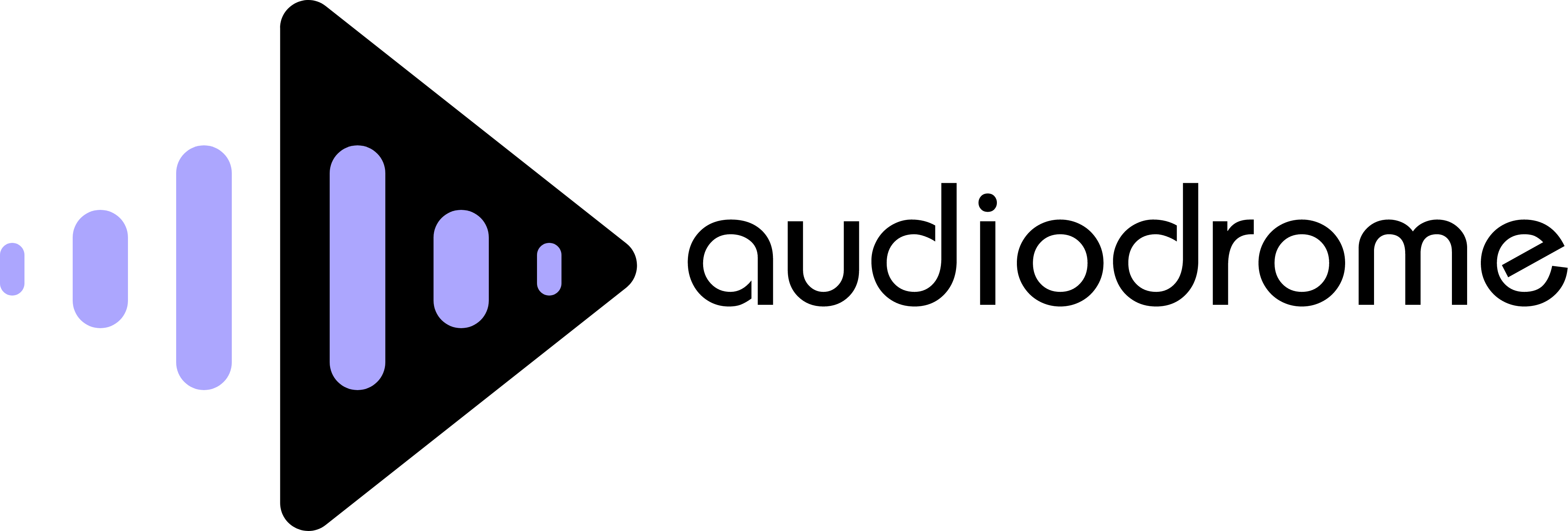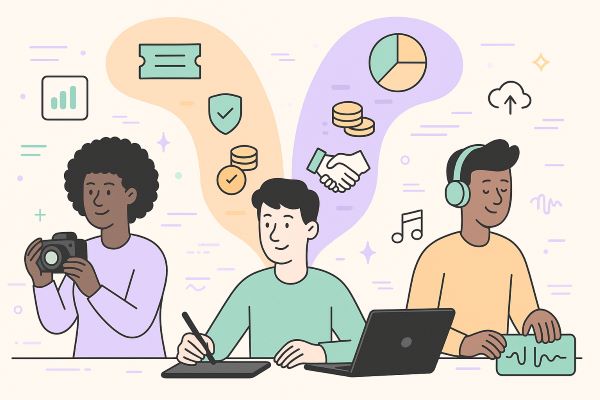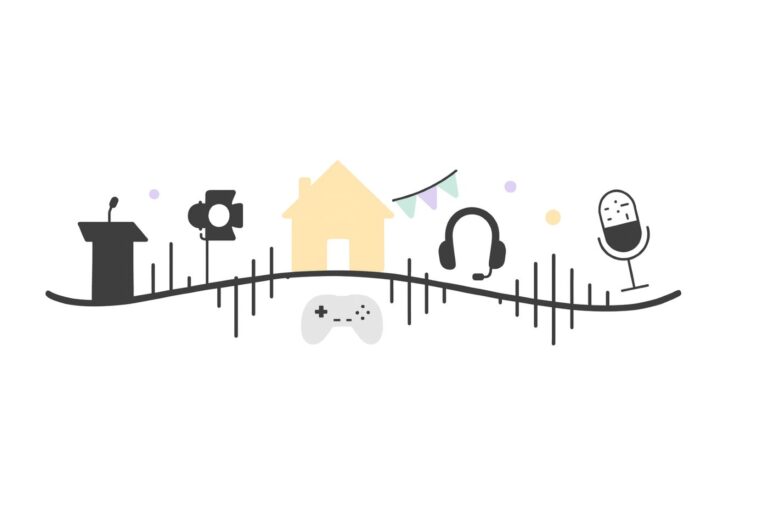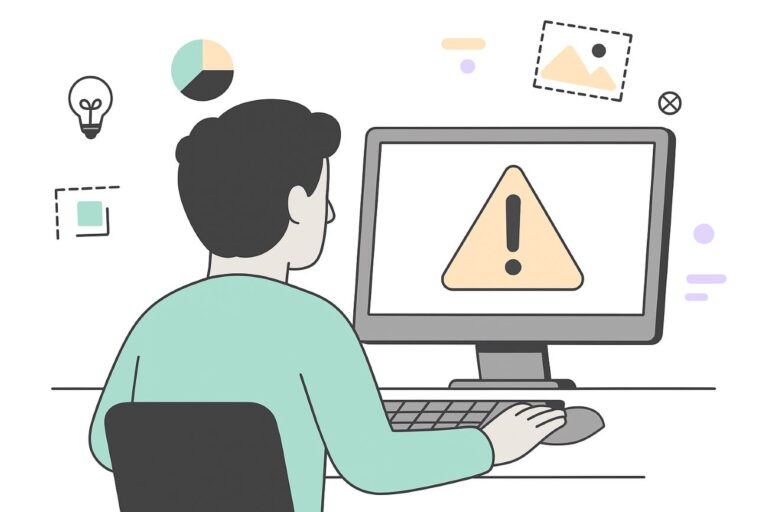Using Creative Commons Music for Podcasts Safely and Legally
Audiodrome is a royalty-free music platform designed specifically for content creators who need affordable, high-quality background music for videos, podcasts, social media, and commercial projects. Unlike subscription-only services, Audiodrome offers both free tracks and simple one-time licensing with full commercial rights, including DMCA-safe use on YouTube, Instagram, and TikTok. All music is original, professionally produced, and PRO-free, ensuring zero copyright claims. It’s ideal for YouTubers, freelancers, marketers, and anyone looking for budget-friendly audio that’s safe to monetize.
You can find free music everywhere, but almost none of it is safe for podcasts. One wrong license turns your intro theme into a copyright headache and a takedown risk. This guide shows how to use Creative Commons tracks without gambling your show, sponsors, or time.
What Creative Commons actually gives you
Creative Commons gives you a set of clear licenses that real creators attach to their work. Instead of saying “use it however you want,” they spell out the rules in plain terms. When you see a CC license on a track, you know the rightsholder chose those specific conditions.
This matters for podcasts because copyright still exists in full. CC does not mean “copyright free” or “no rules.” It means the owner decided in advance how other people can use the music, as long as you follow the license terms they selected.

Each Creative Commons license answers a few key questions about your podcast. Can you earn money with the show or not? Can you trim, loop, or mix the track under your voice? Do you have to share your edits under the same license? How exactly should you give credit?

Once you understand these levers, CC music becomes easier to sort. You can look at a license and quickly see if it fits a sponsor read, a branded show, or a hobby project. The rest of this guide walks through these license types so you can match them to real podcast use instead of guessing.
CC license quick-fit grid
| License | Business podcast? | Ads / sponsorship | Editing / remixing | Attribution | Share-Alike duty | Typical risk | Use? |
|---|---|---|---|---|---|---|---|
| CC BY 4.0 | Yes, commercial use allowed | Yes, ads and sponsors allowed | Yes, edits and remixes allowed | Credit, link, note changes | None | Lower risk if credit is clear and you avoid implying endorsement. | Strong option for business podcasts with proper credit |
| CC BY-SA 4.0 | Yes, but ShareAlike can affect branding | Allowed, but may conflict with ad contracts | Yes, but adapted music must stay CC BY SA | Credit, link, note changes | Yes, adaptations must use same license | Medium to high risk if your mix is treated as an adaptation that must stay CC BY SA. | Use only if you accept ShareAlike on adapted audio |
| CC BY-NC 4.0 | No for monetized or branded shows | No with ads, sponsors or paid plugs | Yes, but only for noncommercial use | Credit, link, note changes | None | High risk once you earn money or market a business with the show. | Avoid for business or sponsor funded podcasts |
| CC BY-NC-SA 4.0 | No, noncommercial use only | No for paid ads or sponsors | Yes, noncommercial only and must stay BY NC SA | Credit, link, note changes | Yes, noncommercial adaptations must keep BY NC SA | Very high risk for any brand, agency or revenue driven show. | Avoid for monetized or corporate podcasts |
| CC BY-ND 4.0 | Only if the track is used unchanged | Commercial use allowed, but no edits | No derivatives. Trimming, looping or ducking may count as edits | Credit and link | None | High risk because normal podcast editing is often treated as a derivative. | Generally avoid unless you have separate written permission |
| CC BY-NC-ND 4.0 | No. Noncommercial and no edits | No ads, sponsors or paid campaigns | No. Only unchanged, noncommercial sharing | Credit and link | None | Extremely high risk for any edited or revenue generating podcast. | Do not use for podcast music |
License types explained (what’s allowed, what breaks)
When you see a Creative Commons logo on a track, you still need to match the exact license to the way your podcast works. Each type below changes what you can do with money, edits, and attribution.
CC BY (Attribution)
CC BY usually fits best when you run a business podcast or plan to monetize later. You can trim, loop, and mix the track under your voice without fighting the license. Many podcasters pick CC BY when they want flexibility but still feel fine about giving the creator clear credit.
%201.jpg)
CC BY asks for proper attribution every time you use the track. That means you name the title, the artist, the license version, and where you found it. When you also note what kind of edits you made, you show respect for the creator and protect yourself if someone questions your use later.
%202.jpg)
CC BY-SA (Attribution ShareAlike)
CC BY SA looks similar to CC BY at first, but it adds a sharing rule on top of normal attribution. If your edits count as a new version of the work, you may need to release that version under the same CC BY SA license. This can create tension when you build a show for a brand or a sponsor.
%203.jpg)
In podcasting, people still argue about whether a finished episode counts as a single derivative work or as a collection of separate pieces. Because that question can affect your legal duties, CC BY SA often feels too risky for branded shows or ad heavy formats. Unless you fully accept the ShareAlike rule and want to follow it, you should usually skip CC BY SA for commercial podcasts.
CC BY-NC (Attribution NonCommercial)
CC BY NC looks attractive for hobby shows, but it clashes with most real-world podcast business models. If you run ads, read sponsor messages, push listeners to Patreon, or include affiliate links, you operate in a commercial context. That conflicts with the NonCommercial condition, even if you feel small or low budget.
%204.jpg)
For brand-owned shows, agency work, or any podcast that supports your company’s sales funnel, CC BY NC simply does not match your goals. You would build your audio brand on music that you technically cannot use once money enters the picture. Because of that, professional podcasters usually treat CC BY NC as off-limits for their main feed.
CC BY-NC-SA
CC BY NC SA stacks the NonCommercial rule on top of the ShareAlike rule. You still need full attribution, you need to avoid commercial use, and you may have to share derivatives under the same license. That creates a tight box that rarely fits real podcast workflows.
%205.jpg)
Once you add sponsors, memberships, or client work, the NonCommercial condition already breaks. When you add ShareAlike on top, you gain almost no practical benefit compared to CC BY, but take on extra confusion. For most serious or growing podcasts, the safest move is to avoid CC BY NC SA and pick a cleaner license path.
CC BY-ND (Attribution NoDerivatives)
CC BY ND allows use only when you do not create a derivative version of the track. In theory, you can include the music as is at full length with proper credit. In practice, almost every podcast edit touches the file in some way, and that change can turn your use into a derivative in the eyes of the rightsholder.
%206.jpg)
When you trim an intro, loop a short section, duck the volume under speech, or apply heavier processing than gentle mastering, you move closer to derivative use. Some creators accept minor edits, but you cannot safely assume that. Because podcast audio nearly always needs at least small changes, CC BY ND rarely works as a bed or theme choice.
CC BY-NC-ND
CC BY NC ND combines all three limits at once. You need full attribution, you cannot use the track in a commercial setting, and you cannot make derivatives. That combination leaves very little room for normal podcast production, especially when you think about edits, sponsorship, or multi-platform distribution.
%207.jpg)
At best, CC BY NC ND might fit a personal, non-monetized project where you drop in the track unedited in a single segment. Even there, you need to watch out for future plans to add sponsors or move into a business context. For most podcasters, this license functions as a red light and points you toward CC BY or toward a royalty-free or commissioned track instead.
A quick legal reality check
You should treat the short Creative Commons summary as a quick guide, not as the actual contract. The real rules sit in the full license text, so you need to read that before you decide a track fits your show. Creative Commons explains options for creators and users, but only your own lawyer can give you legal advice.
%208.jpg)
“Commercial use” in podcasting (how NC breaks)
In podcasting, commercial use starts the moment money connects to the show. Sponsors, hosts, read ads, paid guest slots, and baked-in brand promotions all count. Brand-owned shows, paid distribution deals, affiliate links, and memberships or donations tied to your content also push your podcast into a commercial lane.
.jpg)
Some podcasters run a small hobby show and feel safe because they have not earned yet. Problems start when they later add sponsors, ads, or affiliate links while the music still sits under a NonCommercial license. To stay out of trouble, treat any show with a brand, a sponsor, or an affiliate link as commercial from day one.
Because you cannot easily roll back old episodes or untangle future monetization plans, NC licenses work against your growth. You want freedom to test ads, add Patreon, or hand the show to a client without rewriting your music choices. The simplest rule is this: avoid NC music for anything that might ever earn money.
Edits, mixing, and ND risk
Real podcast editing rarely leaves music untouched. You trim intros and outros, loop a few bars to fit your segment, and line up musical hits under key moments. You also shape the sound with EQ, compression, and volume ducking under your voice, and all of these moves can create a derivative version of the track.

NoDerivatives licenses tell you not to create derivative works at all, which cuts across almost every normal podcast workflow. You may feel safe if you only shorten a track or lower the level, but the rightsholder can still argue that you changed the original. To avoid that fight, treat ND music as off-limits for beds, themes, and background layers.
If you want Creative Commons in your toolbox, CC BY gives you the most realistic space to edit and still follow the rules. You can cut, loop, and mix while you stay focused on solid attribution instead of worrying about small tweaks. For anything more serious or brand-driven, a royalty-free library or commissioned music paired with a clear rights path will usually serve your podcast better.
How to verify a CC track before using it (step-by-step workflow)
Before you rely on Creative Commons music in your podcast, walk through this simple workflow so the track and your use actually match.
Find the source
Start by tracking the music back to the original uploader, not a random repost. Look for the creator’s own site, label page, or a well-known CC library. When you land there, confirm that the track you want to use appears with clear license information next to it.
%201.jpg)
Confirm license version
Once you find the source, look closely at the exact CC version listed on the page. Aim for CC 4.0 when you can, since it reflects the most up-to-date wording and practice. If you see 3.0 or 2.0, note that version in your records so you do not mix them up later.
%202.jpg)
Check for extra terms
After that, read any site’s terms of service or special notes around the track. Some creators give CC rights but still set rules about attribution format or use with brands. If anything limits sponsorship, logos, or certain platforms, treat it as part of the deal and decide if it still fits your show.
%203.jpg)
Evaluate your use
Now compare the license to how your podcast actually works in real life. Ask yourself if the show earns money, runs ads, or pushes listeners to paid products. Think about edits, trailers, and cross-posting to YouTube or social, and make sure the license still makes sense for every place the episode will appear.
%204.jpg)
Check ownership/chain-of-title
Before you fall in love with the track, take a moment to question who really owns it. The person who uploads a file does not always control the rights, especially on open platforms. When you see a random YouTube or file share upload with no clear creator presence, treat that as a red flag and walk away.
%205.jpg)
Capture proof
Once the track passes these checks, save proof that you did your homework. Take screenshots of the track page, the license text, the date, the track ID or URL, and the creator profile. Store these in a safe place so you can show your process if a platform or rightsholder ever questions your use.
%205.jpg)
Test a 30-sec edit
Next, try a short test edit that feels like your real production workflow. Trim the section you plan to use, loop it if needed, and duck it under a sample voice line to see how it behaves. If that normal edit conflicts with ND or NC terms, switch to a royalty-free or commissioned option instead of forcing the fit.
%206.jpg)
File in Proof Pack
To finish the workflow, drop everything into a simple Proof Pack folder for that show. Use a clear naming pattern that includes the episode, track title, creator, license type, and date you captured the proof. Over time, this habit builds a quiet archive that protects you, your clients, and any partners who touch your podcast.
%207.jpg)
Attribution Line Generator
Writing a full Creative Commons credit line by hand is slow, and small mistakes can still trigger claims. The Attribution Line Generator takes your license flavor, creator name, title, and links and turns them into clean TASL credits. You get a complete line you can trust, without guessing formats every time you publish.
For podcasters, this means every CC music track in your intro, beds, or promos gets a consistent credit in show notes and episode pages. The tool also builds a shorter version for tight spaces, so you can keep attribution in descriptions, captions, and end cards while a full record lives on your site.
Embed This Tool on Your Website

Scenario quick answers (what works, what to avoid)
Use these quick scenarios to check in a few seconds whether Creative Commons music actually fits the way you plan to use it in your podcast.
Theme/Intro music
Your theme sets the tone of the show and repeats in every episode, so it needs the cleanest rights you can get. CC BY can work when you want free music and accept clear attribution in notes and on a credits page. For brand shows, sponsors, or long-term series, you usually stay safer if you move to royalty-free, library, or commissioned music instead of NC, ND, or SA.
%201.jpg)
Background beds under voice
Background beds sit under your voice, so you trim, loop, and duck them on almost every episode. CC BY can handle this kind of editing as long as you give proper credit wherever listeners can find it. ND does not fit because every loop and level change creates a new version, and NC turns risky as soon as you run ads, sponsorship, or any form of monetization.
%202.jpg)
Sponsored segments/host-reads
A sponsored segment or host read works as an ad, even if you keep the tone friendly. Treat that block as commercial use and assume that NC licenses conflict with it from the start. With CC BY, read the source page carefully to check for any anti-advertising rules, then document your approval trail so you can show sponsors that the music fits paid messages.
%203.jpg)
Trailers & social cut-downs
Trailers, teasers, and social clips take your music off the main feed and onto platforms like YouTube, TikTok, Instagram, and LinkedIn. Before you publish, confirm that the license lets you repost and remix across these platforms without new approvals. Keep attribution in the description or caption, and link back to a credits page on your site so reviewers can see the full TASL line.
%204.jpg)
Client/agency podcasts
Client shows bring another layer of risk, because your choices now affect someone else’s brand and legal team. In this space, most producers lean toward royalty-free or commissioned tracks with written licenses that clients can store with contracts and brand assets. If a client insists on CC BY, verify the source very carefully, keep screenshots, and package everything in a Proof Pack so you can hand over a clear audit trail with the final files.
Common traps (how podcasts get flagged)
One of the easiest traps starts on YouTube, where a random uploader marks a track as “CC” without owning the rights. You lift that music into your show, and platforms see it as straight copyright infringement.
%201.jpg)
Another common problem appears when a show uses NonCommercial music but still runs ads, sponsors, or affiliate links. The moment money connects to the episode, rightsholders and platforms treat that use as commercial and start raising flags.
%202.jpg)
Editing introduces its own trap when you work with NoDerivatives music and still trim, loop, or duck a track under speech. Every one of those moves creates a new version in the eyes of the creator and can trigger a complaint.
%203.jpg)
ShareAlike rules add another layer of risk when you drop a CC BY SA track into a carefully branded show. If the episode counts as a derivative instead of a simple collection, the ShareAlike license can reach across the whole mix.
%204.jpg)
Even when you pick the right license, sloppy credits still cause trouble. Missing titles, wrong creator names, or broken source and license links make reviewers doubt your rights and increase the chance of blocks, claims, or demonetization.
Other music options for podcasts
Creative Commons can work in narrow cases, but most long-term shows feel safer when they mix in other music options that match their budget and risk tolerance.
Public domain / CC0 music
Public domain and CC0 tracks give you the widest freedom when they are truly clear. You can use them in commercial podcasts, trim them, and repurpose them for trailers or client shows without extra permissions. The hard part is verification, so you still need to check dates, editions, and sources before you trust a file.

Direct licenses for popular songs
Direct licenses cover chart songs, classic tracks, or niche artists your audience already knows. You negotiate terms for your exact use, such as intro stings, limited episode runs, or a specific series. Costs run higher than libraries, but you get music that carries brand recognition and a contract that matches your real plan for the show.

Commissioned original music
Commissioned music gives your podcast a sound nobody else has. You work with a composer or producer, agree on style and length, and sign a contract that sets out ownership and reuse rights. This route often costs more upfront, but it builds a reusable asset you can control across seasons, spin-off shows, and client work.

Royalty-free / production music libraries
Royalty-free and production libraries sit between CC and custom scores. You pay a one-time fee or a subscription and receive a license that covers a wide range of uses, including commercial podcasts and cross-posting to platforms. When you keep copies of the license and receipts in your project folder, music questions during reviews usually resolve in a few minutes.






Podcast Music Source Selector
The Podcast Music Source Selector is a free tool that guides you to the safest music source for your podcast. It evaluates key factors (monetization, brand ownership, editing depth, cross-posting, attribution ability, and exclusivity needs) to understand your real use case. In a few clicks, it recommends the option that protects your episodes, sponsors, and long-term growth.
Podcast Source Selector
In ~60 seconds, get the safest music source path for your situation. Educational, not legal advice.
Includes sponsors, ads, affiliates, paid memberships, or brand PR goals.
Edits can invalidate some licenses (e.g., NoDerivatives).
Educational guidance, not legal advice. Always check actual license terms.
Recommendation
Embed This Tool on Your Website

FAQs
These questions come up again and again when podcasters try to match Creative Commons rules with real production workflows.
Where can I find Creative Commons or public domain music that I can safely use in my podcast?

Start with trusted libraries that clearly label each track, such as dedicated CC platforms, reputable archives, or your preferred RF and PD tools. Look for a license badge next to each file and click through to the full deed before you download. Avoid random reposts on YouTube or file shares because you cannot confirm who owns the rights.
Is Creative Commons NonCommercial music actually safe if my podcast might have sponsors in the future?

NonCommercial licenses only fit projects that never connect to money. The moment you add sponsors, ads, affiliate links, or memberships, you move into commercial use, and the NC license no longer matches. If you think you might monetize in the future, treat NC as off limits and pick CC BY or a royalty-free option instead.
Are there free music and sound options that are truly copyright-safe for a monetized podcast?

Yes, but you need to choose them carefully. CC BY and some public domain or CC0 tracks can work for monetized shows when you follow the license terms and give clear credit. You can also use free tiers from reputable royalty-free libraries that grant commercial rights as long as you keep your proof of license.
How should I correctly credit Creative Commons music in my podcast and in the episode description?

Use TASL in plain language: title, author, source, and license. Say the track title and creator in your outro or intro and mention the license in simple words, such as “licensed under CC BY 4.0.” In your show notes, repeat that line with direct links to the track page and the official license page and include a short note about edits.
I found some Creative Commons sounds on a site like FreeSound; what exactly do I need to do to follow the license?

Open the sound’s detail page and read the exact CC license and any extra notes the uploader added. Check whether your use is commercial, whether you plan to edit the sound, and whether ShareAlike would affect your project. Then build a TASL-style credit with links, save a screenshot of the page, and store everything in your Proof Pack.
Turn Creative Commons rules into a working soundtrack
Podcast music rights look complex at first, but they follow patterns once you match source, scope, and proof to each track. Build one simple workflow, stick to clean licenses, and keep receipts close. Your episodes, sponsors, and archives then grow together without surprise takedowns.

Audiodrome was created by professionals with deep roots in video marketing, product launches, and music production. After years of dealing with confusing licenses, inconsistent music quality, and copyright issues, we set out to build a platform that creators could actually trust.
Every piece of content we publish is based on real-world experience, industry insights, and a commitment to helping creators make smart, confident decisions about music licensing.














